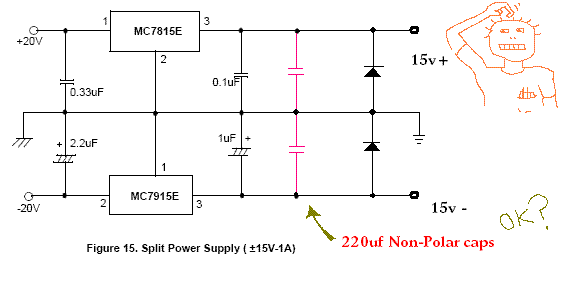For me, with no load at all, negative side's volts will climb....16v to 17v to 18v, etc....
Positive is ok...(14.9v, stable)
Here is a standard PSU regulator setup.
Except I have added capacitance- post regulator. (220uf NP)
I also have the standard extra protection diodes across regulator's in/out (not shown).
I have built and used several of these, and always added a resistor+led at output, for front panel "on" indicator. No problems so far.
This is the first time I tested it w/out the led+resistor (6k)....
and neg side will climb rather quickly.
Is this normal when adding large-ish capacitance after the regulator?
=FB=

Positive is ok...(14.9v, stable)
Here is a standard PSU regulator setup.
Except I have added capacitance- post regulator. (220uf NP)
I also have the standard extra protection diodes across regulator's in/out (not shown).
I have built and used several of these, and always added a resistor+led at output, for front panel "on" indicator. No problems so far.
This is the first time I tested it w/out the led+resistor (6k)....
and neg side will climb rather quickly.
Is this normal when adding large-ish capacitance after the regulator?
=FB=














